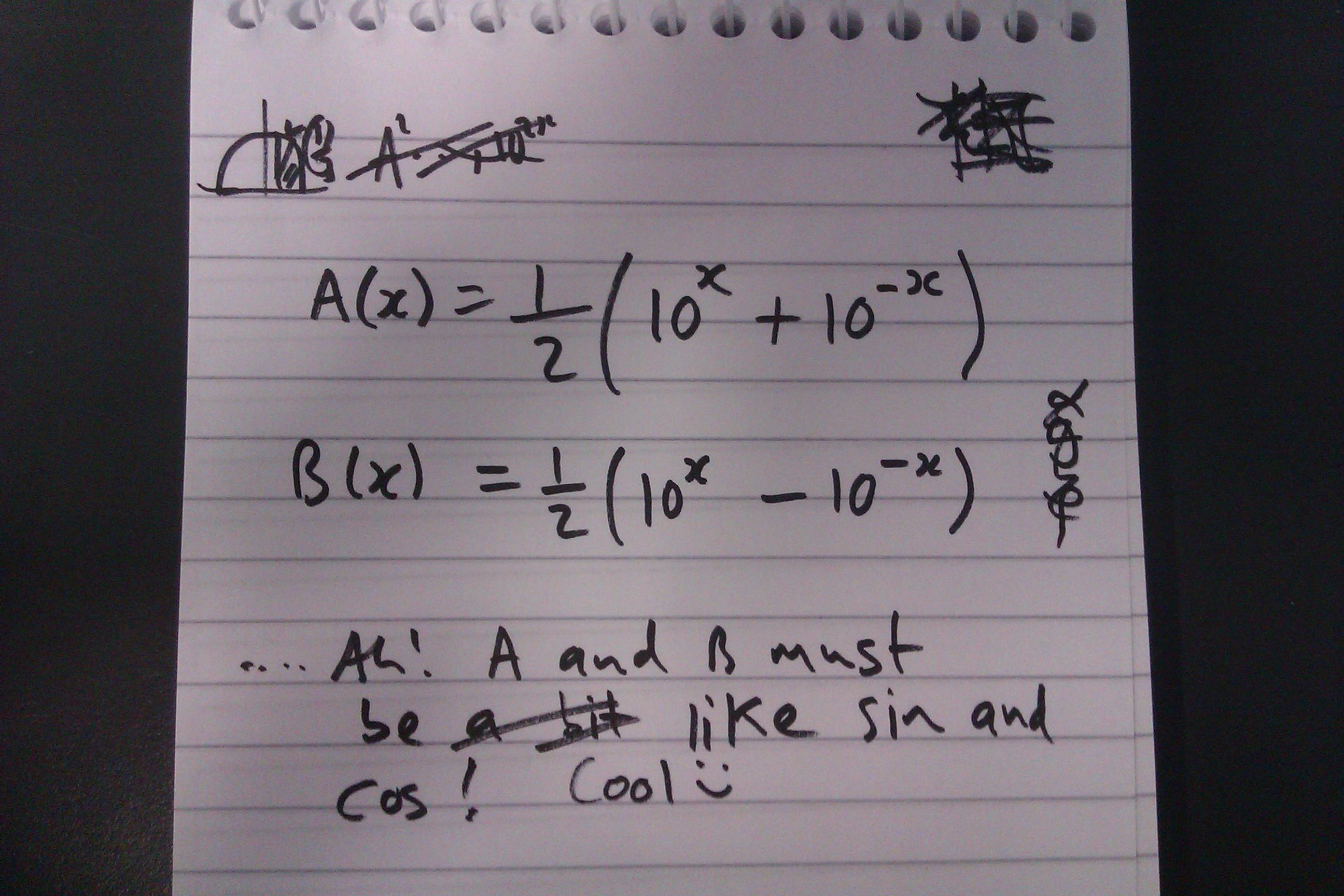Or search by topic
Number and algebra
Geometry and measure
Probability and statistics
Working mathematically
Advanced mathematics
For younger learners
Hyperbolic Thinking



This problem naturally follows on from Trig Reps, although the two problems may be attempted independently.
Steve left the following cryptic page in his notebook:

It seems that Steve thinks the following functions $A(x)$ and $B(x)$ are similar in some way to $\sin(x)$ and $\cos(x)$:
$$A(x) = \frac{1}{2}\Big(10^{x} +10^{-x}\Big)\quad\quad B(x) = \frac{1}{2}\Big(10^{x} -10^{-x}\Big)$$
Is Steve correct? To answer this question, think of as many properties of $\sin(x)$ and $\cos(x)$ as you can and, using these as a guide, explore the properties of $A(x)$ and $B(x)$.
Once you have done this you might wish to consider the properties of functions similar to $A(x)$ and $B(x)$ where the $10$ is replaced by different numbers. Do any of the properties hold for all of the bases? Which properties are base dependent? Is there a natural choice of base which the structure reveals?
You may also like
Big, Bigger, Biggest
Which is the biggest and which the smallest of $2000^{2002}, 2001^{2001} \text{and } 2002^{2000}$?
Infinite Continued Fractions
In this article we are going to look at infinite continued fractions - continued fractions that do not terminate.
Gosh Cosh
Explore the hyperbolic functions sinh and cosh using what you know about the exponential function.

